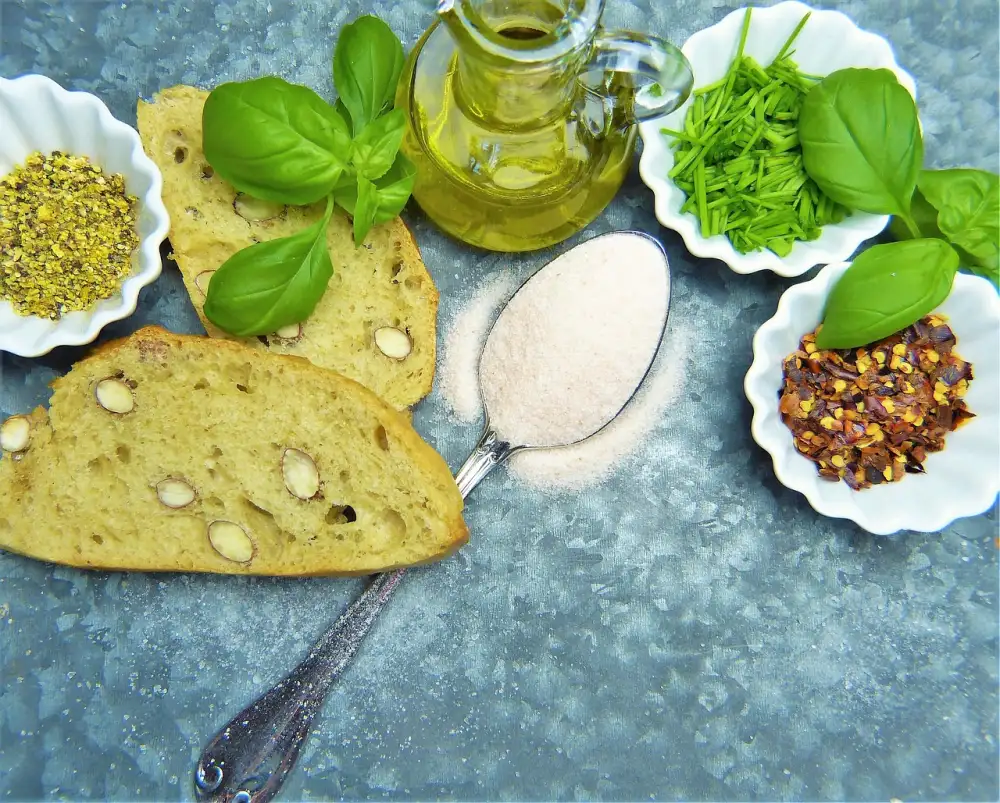Discover the Delight of Gluten-Free Flour: Elevate Your Health with Wheat-Free Baking

Gluten free flour has gained popularity in recent years as more people are opting for a wheat-free lifestyle. But what exactly is gluten free flour? Simply put, it is a type of flour that does not contain gluten, a protein found in wheat, barley, and rye. This makes it an excellent alternative for those with gluten intolerance or celiac disease. Not only does gluten free flour provide a solution for individuals with dietary restrictions, but it also offers a range of health benefits. In this article, we will explore the wonders of gluten free flour and how it can elevate your health and baking experience.
Understanding Gluten and its Effects on Health
Gluten is a protein found in wheat, barley, and rye. For individuals with celiac disease or gluten sensitivity, consuming gluten can lead to various health issues. Celiac disease is an autoimmune disorder where the body's immune system attacks the small intestine when gluten is ingested. This can cause symptoms such as abdominal pain, bloating, diarrhea, and fatigue. Gluten sensitivity, on the other hand, may not cause damage to the small intestine but can still result in similar symptoms. It is important for those with these conditions to avoid gluten-containing products and opt for gluten-free alternatives like gluten-free flour to maintain their health and well-being.
Benefits of Using Gluten Free Flour
Using gluten-free flour in your baking has numerous benefits for your health. Firstly, it is a great option for people with celiac disease or gluten sensitivity, as it allows them to enjoy baked goods without experiencing adverse reactions. Secondly, gluten-free flour is often higher in fiber and nutrients compared to traditional wheat flour. This means that by incorporating it into your recipes, you can boost the nutritional value of your baked goods. Additionally, using gluten-free flour can help improve digestion and reduce inflammation in the body, leading to better overall health. So why not make the switch and reap the benefits of gluten-free baking?
Types of Gluten Free Flour Available
When it comes to gluten-free baking, there are a variety of flour options available that can be used as substitutes for traditional wheat flour. These alternative flours are made from various grains, nuts, and seeds, providing a wide range of flavors and textures. Here are some popular types of gluten-free flour:
1. Almond Flour: Made from finely ground almonds, almond flour is high in protein and healthy fats. It adds a nutty flavor and moist texture to baked goods.
2. Coconut Flour: This flour is made from dried coconut meat and is rich in fiber and low in carbohydrates. It absorbs moisture well, so it's important to use it in combination with other flours.
3. Rice Flour: Made from finely milled rice grains and has a mild flavor. It works well as a base for gluten-free baking but can be slightly gritty if not combined with other flours.
4. Oat Flour: Made by grinding oats into a fine powder, oat flour adds a subtle sweetness to baked goods. However, it's essential to choose certified gluten-free oats if you have celiac disease or a severe gluten intolerance.
5. Buckwheat Flour: Despite its name, buckwheat is not related to wheat at all. It has a distinct earthy flavor and works well in pancakes, bread, and muffins.
6. Quinoa Flour: Quinoa is a nutritious grain that can be ground into flour. It has a slightly bitter taste but adds protein and fiber to your baked goods.
7. Chickpea Flour: Also known as gram flour or besan, chickpea flour is made from ground chickpeas. It has a dense texture and adds a slightly nutty flavor to recipes.
These are just some of the many types of gluten-free flours available on the market today. Experimenting with different combinations can help you achieve the desired taste and texture in your gluten-free baked goods.
Tips for Baking with Gluten Free Flour
When it comes to baking with gluten-free flour, there are a few tips that can help you achieve the best results. Firstly, it's important to understand that gluten-free flours have different properties than traditional wheat flour. They tend to be denser and absorb more liquid, so it's important to adjust your recipes accordingly.
One tip is to use a blend of gluten-free flours rather than relying on just one type. This will help create a better texture and flavor in your baked goods. Some popular gluten-free flour blends include a mix of rice flour, tapioca starch, and potato starch.
Another tip is to add some binding agents to your gluten-free flour mix. Xanthan gum or guar gum can help mimic the elasticity that gluten provides in traditional baking. These binding agents will help hold your baked goods together and prevent them from becoming crumbly.
It's also important to note that gluten-free flours may require additional moisture in your recipes. You may need to increase the amount of liquid or add some extra fat such as butter or oil to keep your baked goods moist.
Lastly, don't be afraid to experiment and adapt your favorite recipes when using gluten-free flour. It may take some trial and error to find the perfect balance, but with practice, you'll be able to create delicious gluten-free treats that everyone can enjoy.
By following these tips, you'll be well on your way to mastering the art of baking with gluten-free flour and creating mouthwatering treats for yourself and others who follow a wheat-free diet.
Incorporating Gluten Free Flour into Your Diet
Switching to a gluten-free diet doesn't mean you have to give up your favorite baked goods. With the wide variety of gluten-free flours available, you can easily incorporate them into your daily meals. Start by replacing regular flour with gluten-free alternatives in your recipes. Experiment with different blends to find the perfect texture and taste for your dishes. You can also use gluten-free flour as a thickening agent in sauces, soups, and gravies. Don't forget to read labels carefully to ensure that all ingredients are truly gluten-free. By incorporating gluten-free flour into your diet, you can enjoy delicious meals without compromising your health.
Gluten Free Flour Recipes for a Healthy Lifestyle
1. Quinoa Pancakes: Replace regular flour with quinoa flour for a protein-packed breakfast option. Top with fresh fruits and a drizzle of honey for added sweetness.
2. Chickpea Flatbread: Mix chickpea flour with water, olive oil, and spices to create a delicious gluten-free flatbread. Serve it as a side dish or use it as a base for pizzas and wraps.
3. Almond Flour Chocolate Chip Cookies: Swap traditional flour with almond flour to make chewy and indulgent chocolate chip cookies. The nutty flavor of almond flour adds an extra dimension to these treats.
4. Buckwheat Banana Bread: Use buckwheat flour instead of wheat flour in your favorite banana bread recipe. This gluten-free version is moist, flavorful, and perfect for breakfast or snacking.
5. Coconut Flour Blueberry Muffins: Combine coconut flour, eggs, coconut oil, and blueberries to make fluffy and nutritious muffins. These gluten-free goodies are packed with fiber and antioxidants.
6. Rice Flour Pizza Crust: Create a crispy pizza crust by using rice flour instead of traditional wheat-based dough. Load it up with your favorite toppings for a satisfying gluten-free pizza night.
7. Oat Flour Banana Pancakes: Blend oats into a fine powder to make oat flour pancakes that are both healthy and delicious. Serve them with sliced bananas and a drizzle of maple syrup.
8. Tapioca Flour Bread Rolls: Make light and airy bread rolls by incorporating tapioca flour into the dough mixture. These gluten-free rolls are perfect for sandwiches or as dinner rolls.
By exploring these gluten-free recipes, you can enjoy tasty meals while maintaining a healthy lifestyle without compromising on flavor or texture!
In conclusion, embracing the versatility of gluten-free flour can significantly improve your overall health and well-being. By eliminating gluten from your diet, you can reduce inflammation, alleviate digestive issues, and even manage certain medical conditions such as celiac disease or gluten sensitivity. Moreover, using gluten-free flour opens up a world of possibilities in baking, allowing you to create delicious and nutritious treats that everyone can enjoy. So why not give it a try? Elevate your health and culinary skills by incorporating gluten-free flour into your daily routine. Your body will thank you for it!
Published: 12. 12. 2023
Category: Health



